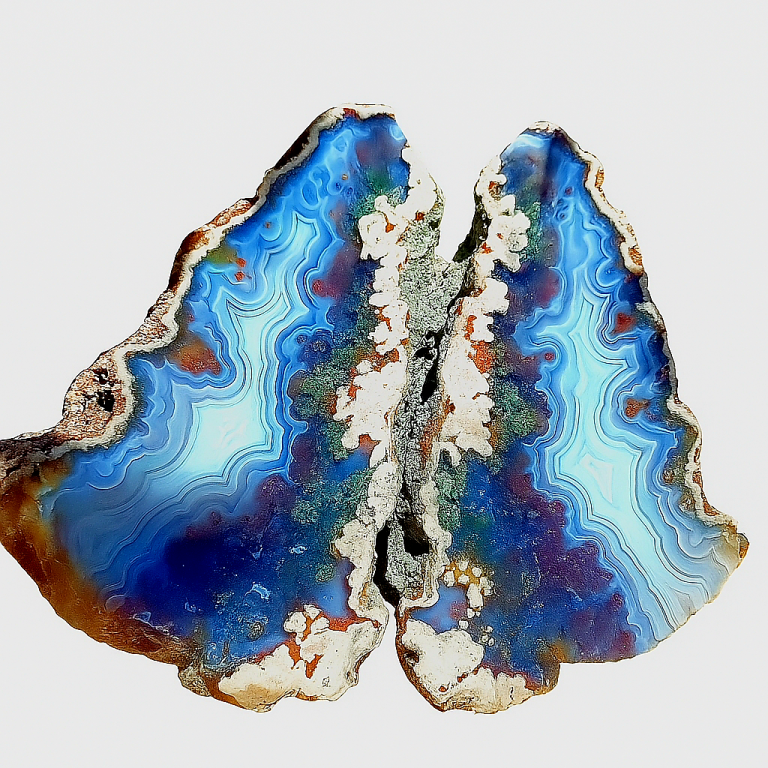Agate

Agate is a fascinating gemstone that captivates collectors and jewelry enthusiasts alike with its extraordinary diversity and beauty.
Agate, a mesmerizing variety of chalcedony born in volcanic wombs, is nature’s testament to time, pressure, and mineral whisperings. With its kaleidoscopic bands and silky sheen, agate is not merely a gemstone—it is a chronicle etched in silica, a frozen ripple of the Earth’s breath.
According to the Gemological Institute of America (GIA), agates are classified primarily by their structure and inclusions. From moss agate, whose green filaments resemble forest undergrowth seen through morning mist, to lace agate, dancing with delicate whorls like ink in water, each type unveils a unique geological symphony. Fire agate, with its inner iridescence, appears to hold the embers of ancient suns, while blue lace agate flows with the calm of sky-colored silk.
Among the world’s agate treasures, Iranian agates hold a sacred and irreplaceable place—both geologically and culturally. The rugged landscapes of Iran, particularly in regions like Fars, Kerman, and Hamedan, cradle some of the oldest and most exquisite agate deposits known to humankind. Iranian agate is celebrated for its rich, earthy hues, often crowned with fiery bands of red, orange, and brown that seem to capture the warmth of Persian sunsets. The stone’s translucence and natural patterns are akin to brush strokes on a canvas, painting stories that span millennia.
For Iranians, agate—or Aqiq—is more than an ornamental gem; it is woven into the very fabric of life. In daily rituals and sacred ceremonies, agate serves as a talisman of courage, wisdom, and spiritual balance. Its polished surface is often worn in rings or kept close as amulets, believed to repel misfortune and invite tranquility. Artisans skillfully carve and engrave Persian calligraphy and mystical symbols onto agate, transforming each piece into a vessel of heritage and hope.
Historically, Iranian traders and craftsmen played a pivotal role in spreading agate’s mystique along the Silk Road, making Aqiq synonymous with nobility and divine favor across vast cultures. Today, the legacy continues as local miners and jewelers preserve ancient techniques, connecting the timeless allure of agate with the pulse of modern life.
In Persian thought, agate embodies the harmony between nature’s raw power and human artistry. It reminds us that beneath the surface of hardened stone lies a world of delicate beauty, patience, and meaning. To wear Iranian agate is to carry a fragment of the Earth’s heart—one that has witnessed empires rise and fall, yet remains eternally radiant.
Agate, in the Persian soul, is not worn for beauty alone. It is worn to remember that strength can be gentle, and beauty can be born of pressure—that even in stone, there can be poetry.
